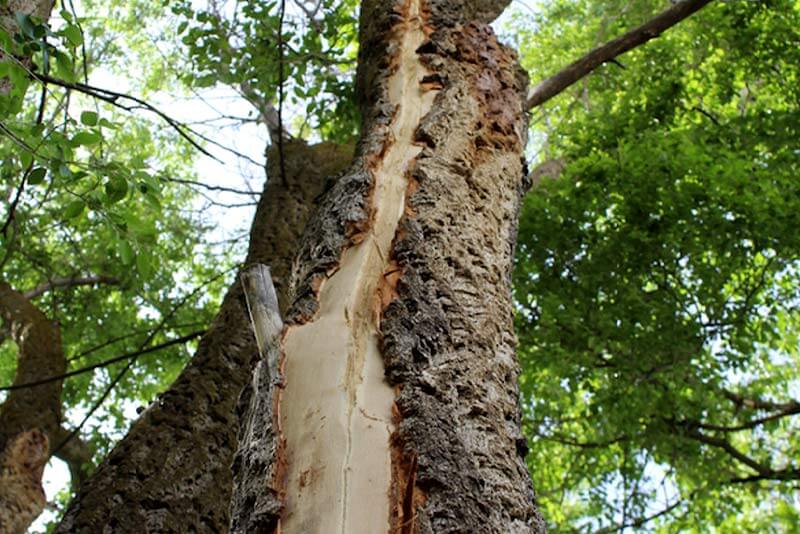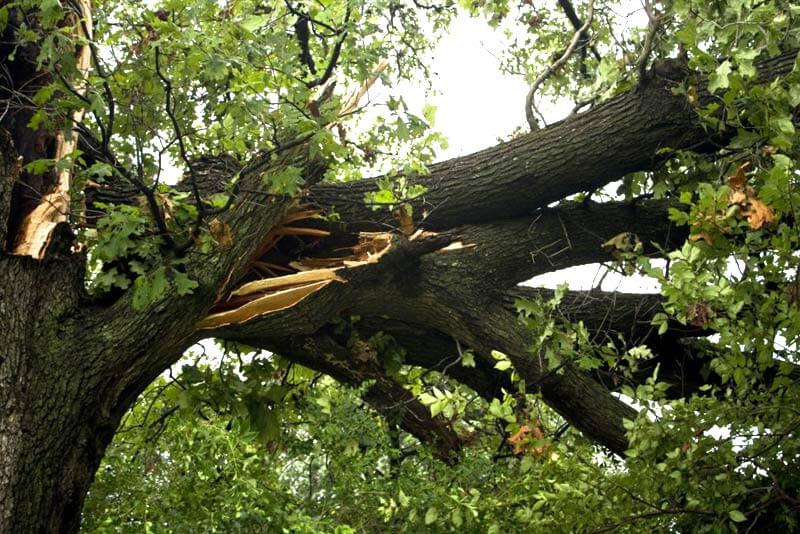Lightning tends to hit tall structures or objects. Electricity also seeks objects with less resistance, and the moisture inside a tree makes it a good conductor. With this, trees are susceptible to swift and devastating damage.
Not all trees that are hit by lightning need removal. Many of these lightning-struck trees can remain alive, especially if only a side or a portion of the tree shows signs of damage.
If provided with enough care and maintenance, and if the damage to the tree is not that serious, lightning-struck trees can survive and even thrive for many years. Some trees can even persist after being hit by lightning more than once.

Once your area has experienced storms, or if one of your trees has been struck by lightning, it’s important to tend to it as soon as possible. Saving or repairing a tree may depend on how fast you provide it with the care and attention it requires.
If the damage is not that grave and drastic, lightning-struck trees can be repaired to help them survive.
Here is how you can repair lightning-struck trees.
Pruning the tree
For most lightning-struck trees, professionals would advise or perform a tree pruning to remove the damaged parts.
Tree pruning involves removing the damaged or affected parts of the tree such as burnt bark, fallen branches, or damaged twigs and leaves. Removing these parts does not necessarily mean that the tree is not salvageable.
By performing tree pruning, the tree is freed from the harmful and damaged parts, which allows and supports its health to survive.
Applying tree supplements
Sometimes, arborists or tree professionals would also recommend or apply tree supplements and impose additional methods just to support the tree’s recovery from the lightning strike.
When can you not repair a lightning-struck tree?
If upon visual inspection and further inspection by a tree professional you find that the tree is badly damaged and should be removed to erase the risks of further harm, it might be best to call for tree removal.
Aside from losing a tree, keeping it can pose serious harm and dangers to your property or your family, especially when the tree is no longer healthy to support its own body when another storm visits your area again.

How do you prevent a tree from being struck by lightning?
Some methods can be taken to help you prevent or lessen the chances of getting one of your trees to be struck by lightning. Adapting these measures early can save you from the costs and extensive repair that could’ve been prevented.
There are lightning protection systems that you can install to help you prevent or protect your property or your vulnerable trees.
What are lightning protection systems?
Although its term can easily be confused, lightning protection systems do not necessarily attract lightning. Its function is to dissipate the electrical charge found in the lightning before it can build or reach harmful and high levels.
Additionally, its purpose is also to release and minimize the electrical charge potential between the cloud and the ground where your tree is located. This, again, turns the lightning strike into a manageable, less dangerous electric current.
Before you decide to have a lightning protection system installed on your property or for your tree, it is necessary to seek an arborist or a tree expert before you do so.
By doing such, you will be certain of a proper installation, professional advice, and quality service.
How do lightning protection systems work?
They can help by slowly releasing electrical charges, making lightning strikes less harmful by dissipating their damage.
These protection systems may or may not involve the installation of an air terminal placed on top of the tree, a copper cable conductor that follows down to the tree’s trunk, and a ground-rod system placed at a safe distance.
With this, whenever lightning strikes the tree, its current and its charge will be directed along the cable, and away from the tree. Simply put, this puts a detour for the damage, making its harmful electric current disperse safely under the ground.
Why does lightning strike trees?
Lightning tends to hit objects that have great heights. Trees, especially those with notable heights, are most likely to fall victim to lightning during a storm. However, height may not be the only reason they are struck.
Naturally, trees are biological objects that absorb water. Additionally, sap and moisture are present in their anatomy, making them more susceptible to conducting and attracting electrical currents, such as lightning.
Other factors such as the type of the tree, its location, and the environmental and weather conditions can also influence a tree’s susceptibility to lightning strikes.
For example, below are some locations where a tree is most likely to be struck by lightning:
- Locations where a tree is situated in an open area
- If the tree is located near a body of water or if it is surrounded by a body of water
- If it is located at the edge of a forest or among many trees
- If it is located on a hilltop or a mountainside
- If it is located near a building or if it is surrounded by buildings
While trees may attract lightning, they are not very good conductors; however, their resistance to electricity flow can produce dangerous effects.
For instance, whenever a tree is hit by lightning, it can produce heat within its body, causing trunks and branches to break or burn. Some can even make their sap overheat.
If the damage of the lightning strike is so serious to the point where it reaches deep within the tree, the entire tree could also explode. Trees that are highly absorbent and keep a lot of moisture tend to have this effect.











